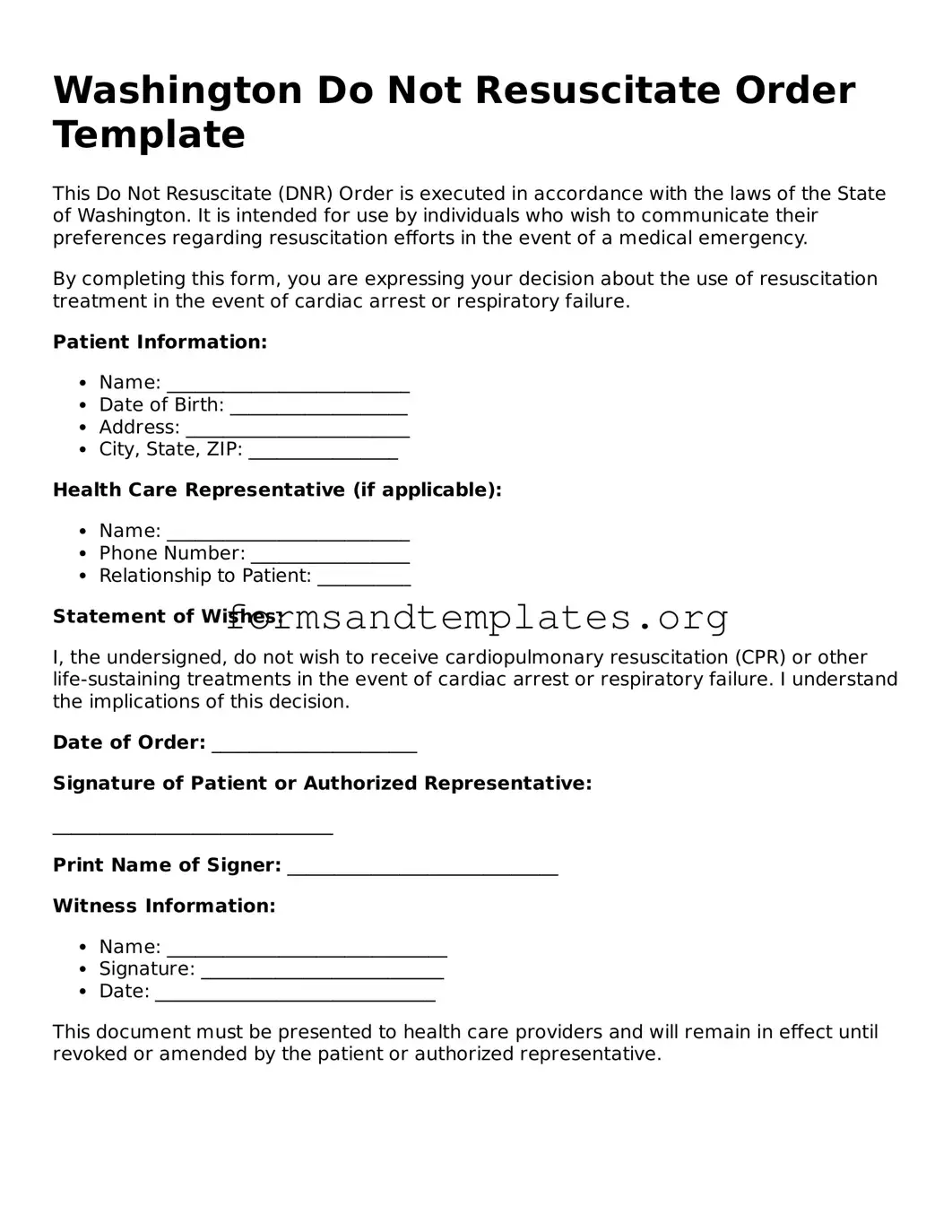Washington Do Not Resuscitate Order Template
This Do Not Resuscitate (DNR) Order is executed in accordance with the laws of the State of Washington. It is intended for use by individuals who wish to communicate their preferences regarding resuscitation efforts in the event of a medical emergency.
By completing this form, you are expressing your decision about the use of resuscitation treatment in the event of cardiac arrest or respiratory failure.
Patient Information:
- Name: __________________________
- Date of Birth: ___________________
- Address: ________________________
- City, State, ZIP: ________________
Health Care Representative (if applicable):
- Name: __________________________
- Phone Number: _________________
- Relationship to Patient: __________
Statement of Wishes:
I, the undersigned, do not wish to receive cardiopulmonary resuscitation (CPR) or other life-sustaining treatments in the event of cardiac arrest or respiratory failure. I understand the implications of this decision.
Date of Order: ______________________
Signature of Patient or Authorized Representative:
______________________________
Print Name of Signer: _____________________________
Witness Information:
- Name: ______________________________
- Signature: __________________________
- Date: ______________________________
This document must be presented to health care providers and will remain in effect until revoked or amended by the patient or authorized representative.
